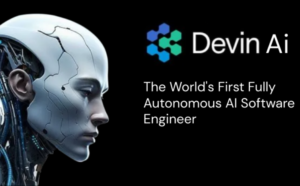In today’s digital era, we have lots of new tools and technologies that are changing how education works. Artificial Intelligence (AI) is one of the most important ones, offering the potential to make teaching more customized, efficient, and fun for kids. But even though there’s a lot of excitement about this, some people worry about how these new things might affect children’s education, which is really important and can shape their future.
Table of Contents
Defining AI in Educational Settings

AI, often seen as something from the future, is basically just giving machines the ability to do things that humans can do. In education, AI is like computer programs and systems that can do smart things like understanding language, recognizing speech, and making decisions. These skills are really important for learning.
What are the benefits of using AI tools for kids’ learning
Using AI tools in children’s education could bring lots of good things that might change how kids learn. Let’s look at how AI is helping education and kids grow in a good way.t.
Personalization of Learning
One of the most significant advantages of AI in education is its ability to tailor learning experiences to the individual needs of each student. Adaptive learning platforms powered by AI can adjust the pace and pathway of a lesson based on a student’s demonstrated understanding, ensuring they are neither left behind nor bored with content that’s too easy. This personalization leads to higher engagement and retention rates, as students feel their unique learning styles are being accommodated.
Enhanced Accessibility
AI tools break down geographical and socio-economic barriers, providing high-quality educational resources to students who might not have access to them otherwise. Advanced tutoring systems and virtual classrooms can expand access to learning opportunities, helping children in remote areas, or with physical or cognitive disabilities, receive the educational support they require.
Analyzing and Improving Performance
By looking at lots of information about how students are doing, AI can help teachers figure out where they might be having trouble, what they’re getting wrong often, and where they might need extra help. This helps teachers find better ways to teach and help students, which makes education better overall.
Enhanced Learning Experience through Gamification
Imagine a classroom where learning feels more like playing a game. This is the magic of gamification in education. By incorporating elements such as points, badges, and leaderboards into lessons, children are motivated to engage with educational content in a fun and interactive way.
Through gamified experiences, kids can improve their problem-solving skills, critical thinking abilities, and creativity while enjoying the process. Whether it’s solving math puzzles or exploring historical events through quests and challenges, gamification makes learning exciting and rewarding for young learners.
Moreover, gaming elements provide instant feedback to students on their progress and achievements, helping them stay motivated and track their development over time.
Fostering Critical Thinking and Problem-Solving Skills
AI can engage children in problem-solving activities that often require higher-order thinking skills. AI uses games and simulations to create situations that are like real life, which makes kids think hard and come up with creative solutions. This helps them learn important skills they need to do well in the world today.
Supporting Social and Emotional Learning (SEL)
Although AI is great for teaching, it can also help kids learn about getting along with others and understanding feelings. By including things like caring, working together, and being part of a team in educational computer programs, AI can teach kids important social and emotional skills as well as academic stuff.
Enhancing Accessibility to Quality Education
AI-driven educational resources and platforms have the potential to break down barriers to quality education. Through online tutoring systems or language learning apps, AI can provide high-quality education to children regardless of their geographical locations or economic backgrounds. By making such resources more accessible, AI contributes to a more equitable learning environment across the globe.
Preparing Children for the AI-Driven World
One big advantage of AI tools is that they help kids get ready for a world where AI is really important. When students use tools with AI, they not only learn school stuff but also get to know what AI can and can’t do. This helps them a lot as they grow up and start jobs where they’ll work with AI a lot.
The Role of AI in Educational Equity

In many places, not all kids have the same opportunities for good education. But AI can help make things more fair by finding out what each kid needs and giving them the help they need to learn. This is especially helpful in classrooms where kids come from different backgrounds
The Impact on Early Childhood Education
AI’s influence is not confined to older students; it is increasingly permeating early childhood education. With careful implementation that respects the unique needs of young learners, AI tools can help build foundational skills in literacy, numeracy, and executive function, setting children on a path for lifelong learning and success.
Overcoming Challenges through Innovative Solutions
AI in education is not without challenges. Concerns about data privacy, the digital divide, and the need for teacher training are valid and require thoughtful solutions. But we shouldn’t overlook the big opportunity for AI to change education and give each student special and new ways to learn.
The Future of Learning with AI
In the future, education with AI isn’t just about teaching facts, but about preparing kids to understand, work with, and change a world where AI is more and more important. When we combine what people know with what AI can do, we can create an amazing way for each kid to learn that’s just right for them.
Addressing the Ethical and Moral Implications
The integration of AI in children’s education also raises significant ethical and moral questions. Privacy, child safety, the risk of AI causing bias is a big worry. It’s really important that we use these technologies carefully to make sure kids are safe, and we keep checking and improving them to get rid of any unfairness and make sure everyone feels included.
Implementing AI in Home Education
For parents opting for homeschooling or seeking to complement traditional schooling, AI tools can serve as a valuable resource. Platforms that offer personalized learning experiences, language teaching, coding instruction, and creative development can become pivotal in the home education ecosystem.
Preparing Educators for the AI-Enhanced Classroom
The successful integration of AI in education is dependent on the preparedness of educators. Training programs that familiarize teachers with AI tools, their potential, and best practices for implementation are essential.By giving teachers more power, we can make sure that AI in classrooms helps them teach better instead of taking their place.
Case studies and stories of success
Real-life examples of AI tools changing the way kids learn are very strong signs of how this technology could affect things. The following case studies show how AI can change learning settings for the better.
Using AI to Learn a Language: Duolingo
A lot of people use Duolingo to learn languages, and it uses AI to make learning languages more personalized. Children who use Duolingo say they are better at speaking and understanding languages. The app has helped make language learning fun and easy for people all over the world.
Robot tutors to help with STEM education
Robot teachers, like SmartGurlz’s Tega, which helps people get along with others, are taking STEM education by storm. Tega uses AI to get kids interested in coding, science, and math by giving them personalized feedback and support, which is hard to do in a regular school.
Conclusion
Bringing together AI and education could completely change how kids learn, giving them lots of benefits along the way. Even though there are problems to work out, the chances to make learning more personal, fun, and to help kids learn important skills are too big to miss. We need to be careful about how we use AI in kids’ education, making sure everyone is treated fairly, included, and that we help them grow in every way.
FAQS
How do AI tools ensure the emotional well-being of children?
AI tools are increasingly being designed with emotional intelligence factors. Some tools can detect stress or frustration in a student’s interaction and can adapt the learning plan to ease the difficulty or provide encouraging feedback to uplift the student.
Aren’t AI tools just ‘smart’ cheat sheets?
Unlike traditional cheat sheets, AI tools focus on the ‘learning’ in ‘helping.’ They encourage students to understand the material by providing thought-provoking prompts and personalized resources to expand their knowledge. It’s learning with assistance, not simple rote memorization.
Can AI hinder the development of social skills?
Social development is crucial, and AI should be used in balance with traditional methods to allow for appropriate social interaction and collaboration. Tools that promote group work and discussions still encourage the development of these necessary social skills.
Is AI used to surmount language barriers?
Yes, AI plays a significant role in language learning and translation. Tools that use AI can teach lessons tailored to a student’s native language while helping them learn a new one. This integration allows for a smoother educational transition, especially for children in multilingual environments.
Will AI lead to a digital divide in education?
There’s a chance that some kids might not have access to technology, but if we act now, we can make sure this doesn’t cause big problems. Everyone involved in education needs to team up to make sure AI tools and stuff like that are given out fairly, and that kids who don’t have technology can still learn like everyone else.
Can AI tools help with developing multiple intelligences?
Yes,AI can help different types of learners in different ways. Whether someone learns best by seeing, hearing, doing, or in other ways, AI can change to fit what they need. This makes AI really useful for helping people learn in lots of different ways
How does AI encourage continuous learning?
Through platforms that use AI, students can receive updated information and challenges, keeping their knowledge current and encouraging them to continue learning beyond standard classroom hours.
Does AI really make learning more fun, or is it just a gimmick?
AI’s gamification isn’t just a trick. Research has consistently shown that well-designed game-based learning can improve learning outcomes and student engagement. AI enhances this experience by customizing the game’s difficulty and feedback based on a student’s skill level.
Can AI over-gamify the learning process?
Like any tool, AI’s gamification should be used in moderation and with clear learning objectives. When balanced with other types of learning activities, game-based AI can effectively engage students without overshadowing the broader educational experience.
Is it ethical to expose young children to AI at an early age?
As with any technology, ethical considerations are crucial. However, controlled and purposeful exposure to AI can result in benefits that far outweigh the risks. The focus should be on responsible and informed use of AI in educational contexts, always maintaining the well-being and development of the child as the top priority.
How can parents support AI-driven education at home?
The role of parents in the AI education ecosystem is significant. By staying informed about the technologies and resources available, parents can ensure that their children are using AI for constructive educational purposes. Regular communication with educators and a balanced approach to screen time can also help maximize the benefits of AI in education.




